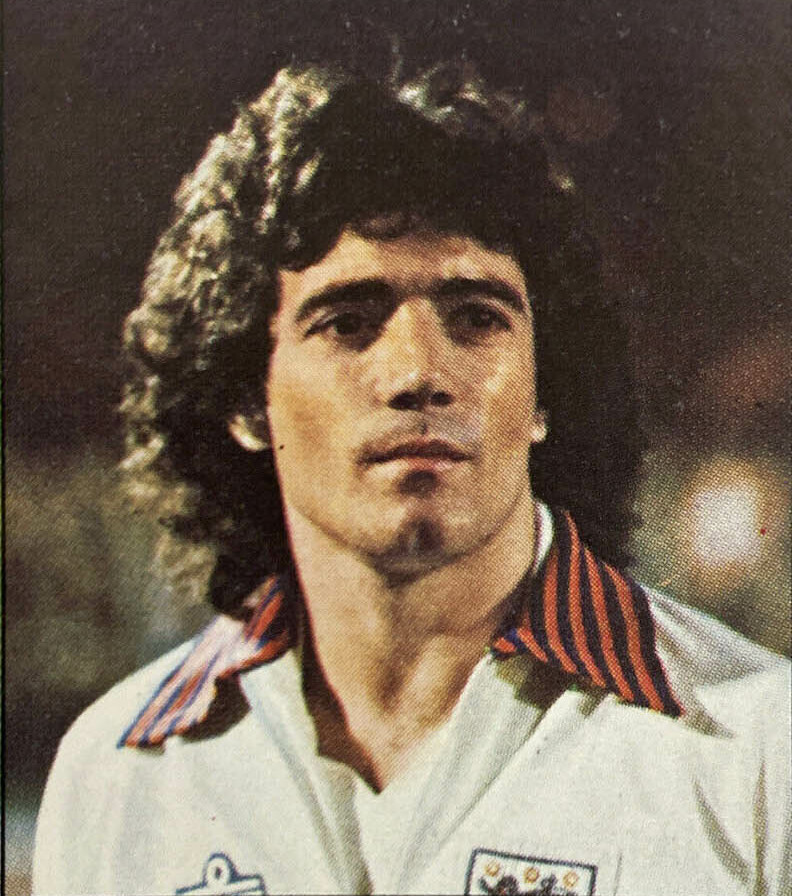Kevin Keegan, one of English football’s most celebrated figures, enjoyed a career that saw him rise from humble beginnings to become a two-time European Footballer of the Year, a decorated player with multiple clubs, and the manager of the England national team. His journey from a working-class upbringing in Doncaster to the global footballing stage is a tale of talent, determination, and resilience. In this article, we will explore Keegan’s early life, his ascent to football stardom, and his ongoing legacy.
Early Life and Childhood
Joseph Kevin Keegan was born on 14 February 1951 at 32 Elm Place in Armthorpe, Doncaster, South Yorkshire. He grew up in a working-class family, with his father, Joe Keegan, working as a miner and his mother, Doris, as a homemaker. The Keegan family lived a modest life, with Kevin being one of five children. Armthorpe, a village just outside Doncaster, was known for its coal mining industry, and many of the local boys, including Keegan, spent their free time playing football on the streets and fields.
Kevin attended St. Peter’s Catholic Primary School in Doncaster, where his love for football began to blossom. His footballing talent was evident from a young age, and by the time he reached secondary school at Danum Grammar School, he was already being recognised as a promising player. Despite his passion for the sport, Keegan remained grounded, balancing his studies with his footballing ambitions.
Keegan’s early football experiences were shaped by his time playing for local teams, including his first club, Pegler Works, a team linked to a local factory. It was here that Keegan’s natural flair, speed, and work ethic began to catch the attention of scouts. His determination and raw talent set him apart, and it wasn’t long before he attracted the interest of professional clubs.
Early Football Career: The Beginning of Greatness
In 1968, at the age of 17, Keegan was signed by Scunthorpe United, a modest club playing in the lower leagues of English football. It was here that Keegan’s professional football career began. Scunthorpe, then a Third Division club, provided Keegan with the perfect environment to hone his skills. Despite being relatively small for a footballer (standing at just 5 feet 8 inches), Keegan’s determination, pace, and tenacity made up for his lack of physical stature.
Keegan quickly became a standout player for Scunthorpe, and his performances on the pitch began to attract the attention of bigger clubs. His ability to play as both a forward and a midfielder gave him versatility, and his relentless work rate endeared him to both fans and teammates.
It wasn’t long before his performances earned him a move to one of England’s biggest clubs – Liverpool.
Liverpool: The Making of a Superstar
In May 1971, Bill Shankly, the legendary Liverpool manager, signed Keegan for £33,000, a relatively modest sum considering what he would go on to achieve. Keegan joined a Liverpool side that was in the process of becoming a dominant force in English football, and under Shankly’s guidance, he flourished.
Keegan’s arrival at Anfield coincided with the club’s rise to dominance in the 1970s. Playing as a forward alongside striker John Toshack, Keegan formed one of the most iconic attacking partnerships in English football. The duo’s contrasting styles complemented each other perfectly, with Keegan’s speed, work ethic, and intelligence combining with Toshack’s aerial prowess and physical presence.
Keegan’s time at Liverpool was hugely successful, both for the club and for him personally. During his six-year stint at Anfield, Liverpool won three First Division titles (1973, 1976, and 1977), the UEFA Cup twice (1973 and 1976), the FA Cup (1974), and the pinnacle of European football, the European Cup in 1977.
Keegan’s performances were instrumental in Liverpool’s success. His work rate, leadership, and ability to score important goals made him a fan favourite, and he quickly became one of the most recognisable footballers in the country. In addition to his club success, Keegan also became a regular for the England national team, making his debut in 1972 and becoming a key figure for his country.
However, despite his success at Liverpool, Keegan shocked the football world in 1977 when he announced he would be leaving the club to pursue a new challenge abroad.
Hamburg: Becoming Europe’s Best
In the summer of 1977, Keegan made a surprising move to West Germany, signing for Hamburger SV (HSV) for a fee of £500,000. The move was seen as a bold and unconventional decision at the time, as very few English players had moved to foreign leagues. However, Keegan’s ambition to test himself on the European stage drove his decision.
Keegan’s first season at Hamburg was challenging. He initially struggled to adapt to life in Germany, both on and off the pitch. However, his determination and professionalism soon paid off, and he quickly became a key player for the club. Under the guidance of coach Branko Zebec, Keegan led Hamburg to the Bundesliga title in 1979, their first league championship in 19 years.
Keegan’s individual performances during his time at Hamburg were exceptional. In 1978 and 1979, he was named European Footballer of the Year (Ballon d’Or), becoming the first English player to win the award twice. His success in Germany not only cemented his status as one of the best players in the world but also raised the profile of English players in European football.
Keegan’s time at Hamburg ended in 1980, but his impact on the club and German football was lasting. He remains one of the most iconic foreign players to have played in the Bundesliga.
Return to England: Southampton and Newcastle United
After leaving Hamburg, Keegan returned to England, signing for Southampton in 1980. The move was another surprise, as Southampton was not one of the traditional powerhouses of English football. However, Keegan’s decision was motivated by his desire to play for a club where he could enjoy his football without the pressures of constant success.
Keegan’s time at Southampton was relatively short, but he continued to impress with his performances. In 1982, he was named the PFA Player of the Year, and he finished as the First Division’s top scorer in the same season. Despite Southampton not winning any major trophies during Keegan’s time at the club, his impact on the team was significant.
In 1982, Keegan made one final move in his playing career, joining Newcastle United. At the time, Newcastle was a Second Division club, and Keegan’s arrival was seen as a major coup. His influence at Newcastle went beyond his performances on the pitch; he became a leader both on and off the field, and his presence helped to revitalise the club.
Keegan’s time at Newcastle culminated in promotion to the First Division in 1984, and shortly after achieving this, Keegan decided to retire from professional football at the age of 33.
England Career
Keegan enjoyed a successful international career with England, earning 63 caps and scoring 21 goals between 1972 and 1982. He captained the national team for much of his international career, and while England failed to achieve major success during his time with the team, Keegan’s leadership and performances were consistently praised.
The biggest disappointment of his international career came during the 1982 World Cup in Spain. Keegan was carrying a back injury throughout the tournament and only played in the final group stage match against Spain, where he missed a crucial header that would have sent England into the semi-finals. Despite this setback, Keegan’s contribution to English football remains significant.
Management Career: Newcastle, Fulham, England
After retiring as a player, Keegan initially stepped away from football, focusing on other ventures, including a brief career in punditry. However, in 1992, he returned to the sport in a management capacity, taking over as the manager of Newcastle United.
Keegan’s tenure as Newcastle manager is one of the most iconic periods in the club’s history. Taking over a struggling Second Division side, Keegan led Newcastle to promotion in his first season and then transformed them into one of the most exciting teams in the Premier League.
Under Keegan’s leadership, Newcastle played an attacking brand of football that thrilled fans and neutrals alike. The team came close to winning the Premier League title in the 1995-96 season, but ultimately finished as runners-up to Manchester United after squandering a 12-point lead. Despite this disappointment, Keegan’s tenure is remembered fondly by Newcastle fans, and his influence on the club remains strong.
Keegan went on to manage Fulham and briefly returned to manage Newcastle in the late 2000s. However, his most high-profile role came in 1999 when he was appointed as the manager of the England national team. Keegan’s time with England was short-lived, as he resigned in 2000 following a disappointing performance in the 2000 European Championship.
What’s Keegan Doing Now?
In recent years, Kevin Keegan has largely stepped away from football management and media. He remains a beloved figure in English football and occasionally makes appearances at events or for interviews. Keegan is known to have settled into a quieter life with his family, spending much of his time out of the public eye.
His legacy, however, continues to loom large. As a player, Keegan was a trailblazer, both domestically and internationally. His time at Liverpool, Hamburg, and Newcastle cemented his place as one of the greatest English footballers of all time. As a manager, his swash






